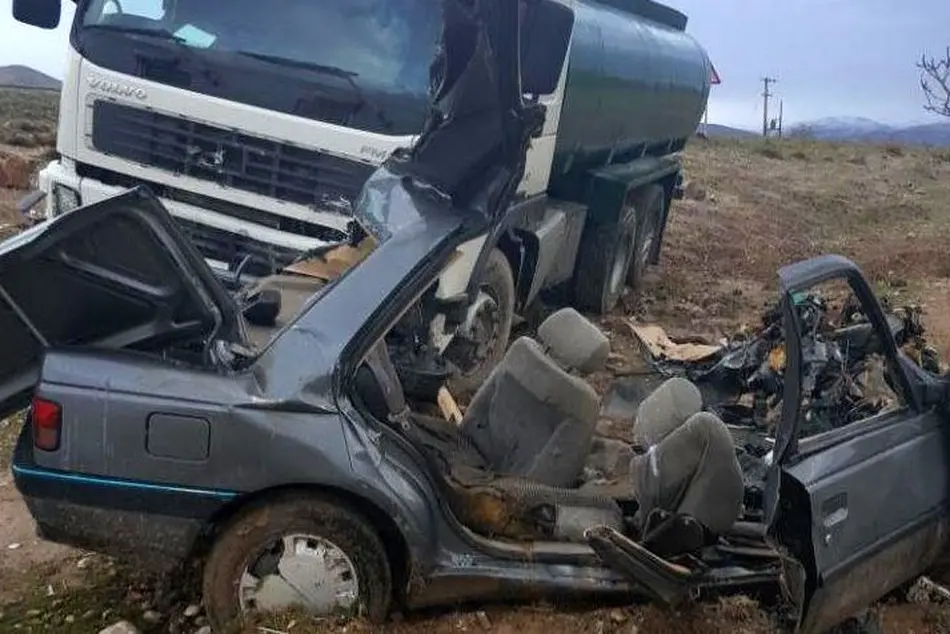Road traffic injuries
Every year the lives of approximately 1.3 million people are cut short as a result of a road traffic crash. Between 20 and 50 million more people suffer non-fatal injuries, with many incurring a disability as a result of their injury.

Every year the lives of approximately 1.3 million people are cut short as a result of a road traffic crash. Between 20 and 50 million more people suffer non-fatal injuries, with many incurring a disability as a result of their injury.
Road traffic injuries cause considerable economic losses to individuals, their families, and to nations as a whole. These losses arise from the cost of treatment as well as lost productivity for those killed or disabled by their injuries, and for family members who need to take time off work or school to care for the injured. Road traffic crashes cost most countries 3% of their gross domestic product.
Key facts
- Approximately 1.3 million people die each year as a result of road traffic crashes.
- The United Nations General Assembly has set an ambitious target of halving the global number of deaths and injuries from road traffic crashes by 2030 (A/RES/74/299)
- Road traffic crashes cost most countries 3% of their gross domestic product.
- More than half of all road traffic deaths are among vulnerable road users: pedestrians, cyclists, and motorcyclists.
- 93% of the world's fatalities on the roads occur in low- and middle-income countries, even though these countries have approximately 60% of the world's vehicles.
- Road traffic injuries are the leading cause of death for children and young adults aged 5-29 years.
Who is at risk?
Socioeconomic status
More than 90% of road traffic deaths occur in low- and middle-income countries. Road traffic injury death rates are highest in the African region. Even within high-income countries, people from lower socioeconomic backgrounds are more likely to be involved in road traffic crashes.
Age
Road traffic injuries are the leading cause of death for children and young adults aged 5-29 years.
Sex
From a young age, males are more likely to be involved in road traffic crashes than females. About three quarters (73%) of all road traffic deaths occur among young males under the age of 25 years who are almost 3 times as likely to be killed in a road traffic crash as young females.
Risk factors
The Safe System approach: accommodating human error
The Safe System approach to road safety aims to ensure a safe transport system for all road users. Such an approach takes into account people’s vulnerability to serious injuries in road traffic crashes and recognizes that the system should be designed to be forgiving of human error. The cornerstones of this approach are safe roads and roadsides, safe speeds, safe vehicles, and safe road users, all of which must be addressed in order to eliminate fatal crashes and reduce serious injuries.
Speeding
- An increase in average speed is directly related both to the likelihood of a crash occurring and to the severity of the consequences of the crash. For example, every 1% increase in mean speed produces a 4% increase in the fatal crash risk and a 3% increase in the serious crash risk.
- The death risk for pedestrians hit by car fronts rises rapidly (4.5 times from 50 km/h to 65 km/h).
- In car-to-car side impacts the fatality risk for car occupants is 85% at 65 km/h.
Driving under the influence of alcohol and other psychoactive substances
- Driving under the influence of alcohol and any psychoactive substance or drug increases the risk of a crash that results in death or serious injuries.
- In the case of drink-driving, the risk of a road traffic crash starts at low levels of blood alcohol concentration (BAC) and increases significantly when the driver's BAC is ≥ 0.04 g/dl.
- In the case of drug-driving, the risk of incurring a road traffic crash is increased to differing degrees depending on the psychoactive drug used. For example, the risk of a fatal crash occurring among those who have used amphetamines is about 5 times the risk of someone who hasn't.
Nonuse of motorcycle helmets, seat-belts, and child restraints
- Correct helmet use can lead to a 42% reduction in the risk of fatal injuries and a 69% reduction in the risk of head injuries.
- Wearing a seat-belt reduces the risk of death among drivers and front seat occupants by 45 - 50%, and the risk of death and serious injuries among rear seat occupants by 25%.
- The use of child restraints can lead to a 60% reduction in deaths.
Distracted driving
There are many types of distractions that can lead to impaired driving. The distraction caused by mobile phones is a growing concern for road safety.
- Drivers using mobile phones are approximately 4 times more likely to be involved in a crash than drivers not using a mobile phone. Using a phone while driving slows reaction times (notably braking reaction time, but also reaction to traffic signals), and makes it difficult to keep in the correct lane, and to keep the correct following distances.
- Hands-free phones are not much safer than hand-held phone sets, and texting considerably increases the risk of a crash.
Unsafe road infrastructure
The design of roads can have a considerable impact on their safety. Ideally, roads should be designed keeping in mind the safety of all road users. This would mean making sure that there are adequate facilities for pedestrians, cyclists, and motorcyclists. Measures such as footpaths, cycling lanes, safe crossing points, and other traffic calming measures can be critical to reducing the risk of injury among these road users.
Unsafe vehicles
Safe vehicles play a critical role in averting crashes and reducing the likelihood of serious injury. There are a number of UN regulations on vehicle safety that, if applied to countries’ manufacturing and production standards, would potentially save many lives. These include requiring vehicle manufacturers to meet front and side impact regulations, to include electronic stability control (to prevent over-steering) and to ensure airbags and seat-belts are fitted in all vehicles. Without these basic standards the risk of traffic injuries – both to those in the vehicle and those out of it – is considerably increased.
Inadequate post-crash care
Delays in detecting and providing care for those involved in a road traffic crash increase the severity of injuries. Care of injuries after a crash has occurred is extremely time-sensitive: delays of minutes can make the difference between life and death. Improving post-crash care requires ensuring access to timely prehospital care, and improving the quality of both prehospital and hospital care, such as through specialist training programmes.
Inadequate law enforcement of traffic laws
If traffic laws on drink-driving, seat-belt wearing, speed limits, helmets, and child restraints are not enforced, they cannot bring about the expected reduction in road traffic fatalities and injuries related to specific behaviours. Thus, if traffic laws are not enforced or are perceived as not being enforced it is likely they will not be complied with and therefore will have very little chance of influencing behaviour.
Effective enforcement includes establishing, regularly updating, and enforcing laws at the national, municipal, and local levels that address the above mentioned risk factors. It includes also the definition of appropriate penalties.
What can be done to address road traffic injuries
Road traffic injuries can be prevented. Governments need to take action to address road safety in a holistic manner. This requires involvement from multiple sectors such as transport, police, health, education, and actions that address the safety of roads, vehicles, and road users.
Effective interventions include designing safer infrastructure and incorporating road safety features into land-use and transport planning, improving the safety features of vehicles, improving post-crash care for victims of road crashes, setting and enforcing laws relating to key risks, and raising public awareness.
WHO response
Providing technical support to countries
WHO works across the spectrum in countries, in a multisectoral manner and in partnership with national and international stakeholders from a variety of sectors. Its objective is to support Member States in road safety policy planning, implementation and evaluation.
In addition, WHO collaborates with partners to provide technical support to countries. For example, WHO is currently collaborating with the Bloomberg Initiative for Global Road Safety (BIGRS) to reduce fatalities and injuries from road traffic crashes in targeted low- and middle-income countries and cities.
In 2017, WHO released Save LIVES a road safety technical package which synthesizes evidence-based measures that can significantly reduce road traffic fatalities and injuries. Save LIVES: a road safety technical package focuses on Speed management, Leadership, Infrastructure design and improvement, Vehicle safety standards, Enforcement of traffic laws and post-crash Survival.
The package prioritizes 6 strategies and 22 interventions addressing the risk factors highlighted above, and provides guidance to Member States on their implementation to save lives and meet the road safety target of halving the global number of deaths and injuries from road traffic crashes by 2020.
Coordinating the Decade of Action for Road Safety
WHO is the lead agency – in collaboration with the United Nations regional commissions – for road safety within the UN system. WHO chairs the United Nations Road Safety Collaboration and serves as the secretariat for the Decade of Action for Road Safety 2011– 2020. Proclaimed through a UN General Assembly resolution in 2010, the Decade of Action was launched in May 2011 in over 110 countries, with the aim of saving millions of lives by implementing the Global Plan for the Decade of Acton.
WHO also plays a key role in guiding global efforts by continuing to advocate for road safety at the highest political levels; compiling and disseminating good practices in prevention, data collection and trauma care; sharing information with the public on risks and how to reduce these risks; and drawing attention to the need for increased funding.
Monitoring progress through global status reports
WHO's Global status report on road safety 2018 presents information on road safety from 175 countries. This report is the fourth in a series and provides an overview of the road safety situation globally. The global status reports are the official tool for monitoring the Decade of Action.



